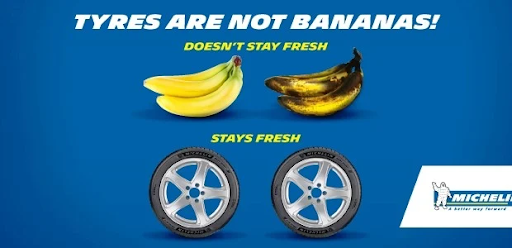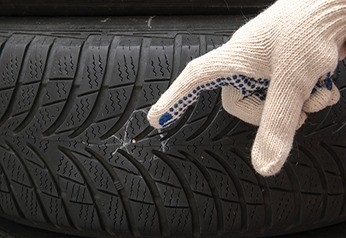
March 27, 2023
When Do Tyres Expire
When Do Tyres Expire?
Do they even have a shelf life?
What if they've never been used?
Does the age of a tyre matter?
These are just some of the questions asked by many car owners when choosing new tyres.
In recent years, consumers have been exposed to different views, both in traditional and social media, about tyres having set deadlines, including tyres that have never been installed on a car and used on the road. These viewpoints have fueled much confusion and misconceptions about how long is the true useful life of a tyre.
If you're in the market for new tyres, Tyroola will help answer these questions.
Here's a quick rundown on tyre age, what it is, and how it's determined. Let's examine new developments in the industry to help you make an informed decision when buying new tyres.
The DOT Code And What It Says About Your Tyre's Age

Every tyre has a DOT (Department of Transportation) code embossed on the sidewall, which shows WHEN a tyre was made / how old the tyre is. It is the smaller set of 11 numbers usually located near the rim or tyre bead area. The last four four-digits make up the Tyre Identification Number (TIN) that indicates the week and year of production. For example, if the numbers are "0619", like in the photo above, the tyre was manufactured on the sixth week of 2019.
If there are only 10 numbers in your tyre's DOT, then it means it was manufactured before 2000 and is too old to use.
Do Tyres Have an Expiry Date?
Technically, no - they don't have an expiry date.
In Australia, there are currently no legal requirements for tyres to be used by a specific date. Tyres are also NOT required to have mandatory labels that outline their features and benefits, like the EU tyre label, which Tyroola currently displays on a wide variety of tyres on its website anyway.
Even in Europe, though they require the EU label, there is no straightforward rule on the maximum age of a tyre when sold, and regulations vary per country.
But in general, tyres are still considered "new" for five to six years from the date of manufacture - when stored in proper conditions.
So for the example above, a tyre made in June 2019 is still considered a new tyre in July 2021 since it has only been two years since they were made.
The Italian National Association of Tyre Manufacturers has clearly stated that tyres don't have an expiry date. "There is no correlation between the date of manufacture and the usable life and performance of a tyre. Tyres are not a perishable product like a food item, and so linking its value to its date of production or "freshness" is a misleading commercial proposal," Fabio Bertolotti, Director of Assogomma, said in an official statement.
He went on to say that what is more important is what happens when the tyre is fitted onto the car. "The life of a tyre is will ultimately depend on the conditions of use and many other variables such as the load, speed, road conditions, exposure to the heat and weather, as well as if they are correctly maintained."
Michelin's "Tyres are not Bananas" Campaign

Image Credit: https://www.michelin.in/auto/michelin-tyres-are-not-bananas
Moving from Italy to France, where French tyre brand Michelin, one of the top three largest tyre manufacturers in the world, echoed the same sentiments a few years ago by launching their "Tyres are not Bananas" campaign. The goal was to educate customers on the best time to replace their tyres.
Michelin declared that a tyre starts to age on the day it is fully inflated and installed on a vehicle by the tyre shop - and not on the date it was manufactured (DOT code).
Michelin's claims: Tried & Tested
Michelin claims their unused tyres are as good as new when installed even if produced three years earlier. They conducted a series of tests in Germany, Korea, and Saudi Arabia that ultimately proved that an unused Michelin tyre, previously stored for some years, delivered the same performance as a "fresh-from-the-factory" set.
In Korea, a new set of tyres matched a set stored for three years in a series of incremental and high-speed tests, while in Germany, the trials focused on rolling resistance.
There was no difference in performance for both groups. However, in Saudi Arabia, Michelin took it a step further, testing a set of tyres used for a year vs a set of tyres unused and in storage for a decade. The results showed that their performances matched.
Tyre Shelf Life & Australian Law

In Australia, there are currently no legal requirements for tyres to be used by a specific date. The tyre regulations specified in (Australian Design Rules) ADR 42 and ADR 23 are the ones being followed.
ADR 42 states that a guard must cover tyres and wheels and specifies the legal distance between the centre of your wheel and the tyre guard. ADR 23, on the other hand, outlines the construction standards and sidewall labelling conventions of tyres so Australian vehicles can legally fit them.
Over in the United States, there is no standard regulation that determines a tyre's sell-by date. The US Tire Manufacturer's Association states that tyres wear down and get damaged due to a "combination of time, storage conditions and conditions of use – such as inflation pressure, load, speed, temperature, wheel alignment, impacts and road hazard injury."
The Potential "Danger" of Tyre "Expiry Dates"

From what we learned above, tyres don’t really have an expiry date and the date of production found on the DOT doesn’t have any direct effects on a tyre’s quality.
As stated by many in the tyre industry, everyday driving demands have a larger impact on a tyre's usable life.
Most drivers don't check their tyre pressure consistently and drive around with underinflated or worn-out tyres, a far more dangerous habit with a direct effect on the handling performance of any vehicle.
While yes, it is important to consider the tyre's DOT, proper maintenance is still crucial. Don't forget to check if the tyre has the correct air pressure; the tyre tread depth is still within the legal limits - which is 1.5mm in Australia; it is aligned correctly, regularly rotated and inspected for cuts and holes.
The Negative Effects of Tyre Expiry on the Environment

Because of all the misconceptions surrounding tyre expiry dates, some motorists now prefer newly manufactured tyres over unused and properly stored tyres made three to four years ago.
Tyre manufacturers keep producing new models to keep up with the growing demand for 'ultra-fresh" tyres, using increasing amounts of raw materials, electricity, and other precious resources.
More and more unused, "older-but-new" tyres end up being scrapped by tyre companies as well, causing significant financial losses as well as environmental waste.
There is also a large number dumped by car owners and tyre shops that do not know how to dispose of them properly.
These discarded tyres end up in landfills and dumpsites, leaching their chemicals into the ground or shedding microplastics that make their way to the bottom of the ocean.
Indiscriminate disposal of so-called "expired" tyres should balance with the continued efforts to protect the planet.
Tyroola's Tyre Age Policy

Regardless of the overwhelming evidence against using DOT as the sole indicator for tyre quality, Tyroola highlights any tyre available on its website older than 4 years with a "Clearance" badge for easy identification.
While a good proportion of tyres sold by Tyroola are only one or two years old, there is no additional risk linked to slightly older tyres, especially on some unusual tyre sizes, as all tyres are stored in proper conditions.
As for warranties, Tyroola will use the date of the order against the tyre's manufacture date to determine the maximum 4-year gap.
We also only sell NEW tyres; we do not sell second-hand/used tyres, factory seconds, or damaged tyres.
Final Takeaway
In short, tyres don’t have an expiry date.
The DOT code will only tell you how old your tyre is - but not when it is no longer fit to use or "expired".
Most countries, Australia included, also don't have any laws that state tyres should only be X number of years old to be considered road-legal.
The general rule of thumb, however, is that tyre replacement is a must for tyres older than ten years from the manufacturing date.
At the end of the day, proper tyre maintenance will ensure that tyres last longer. For your peace of mind, check the DOT code, ensure that unused yet older tyres have been stored properly, and maintain your tyres regularly.



